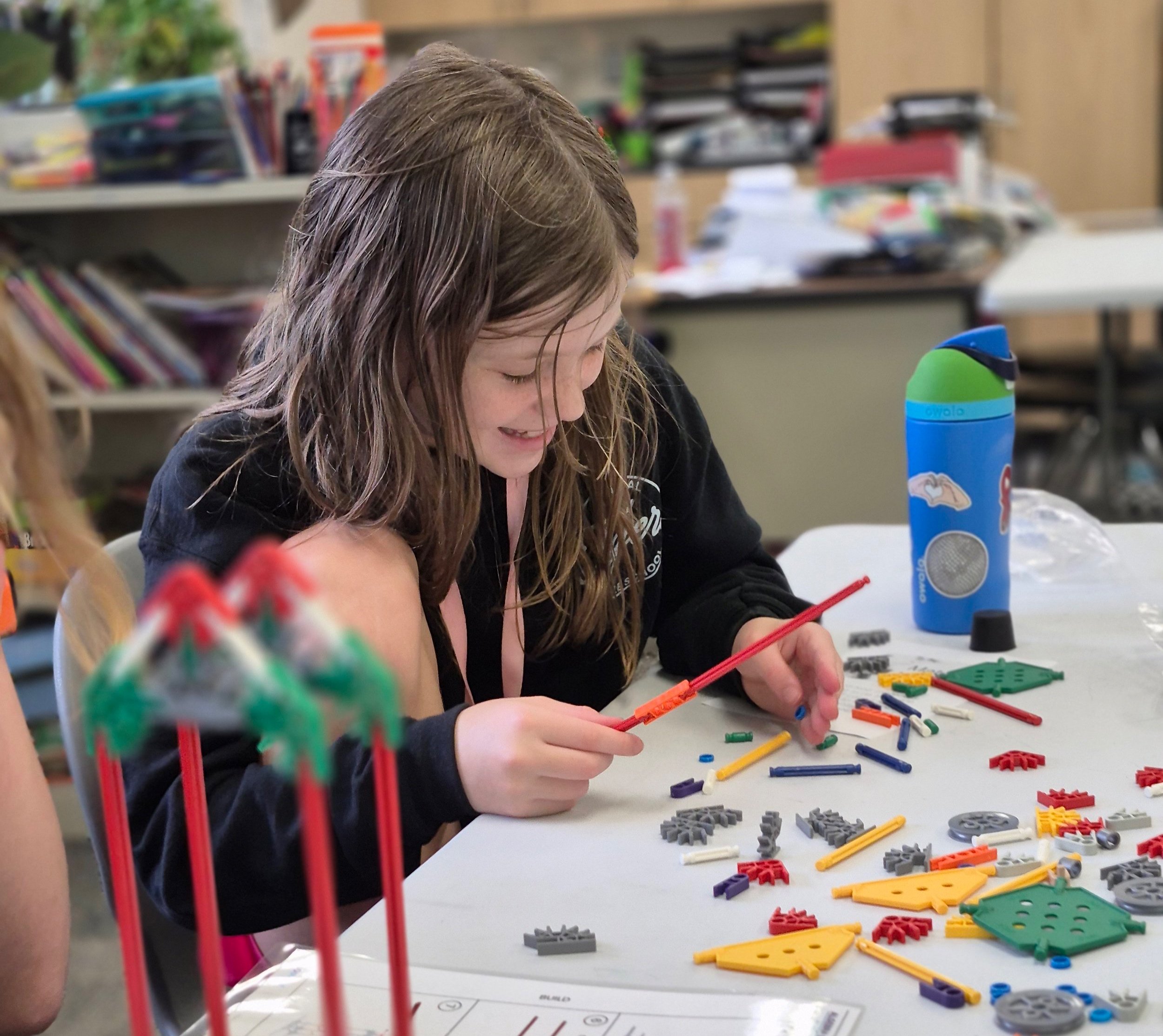Human-Centered Learning in an Age of AI
Hands-on, social math experiences are more urgent than ever
PART 1: MATH LAB
PART 2: STRESSED-OUT KIDS CAN’T LEARN
PART 3: MATH IS A HUMAN SKILL
PART 4: TEACHERS ARE NOT THE PROBLEM
PART 5: WHAT TO DO IN MATH LAB

Math is a Human Skill
In an age of AI and automation, Math Lab restores math as a deeply human activity—fostering reasoning, creativity, and collaboration through embodied, social learning.
There is a growing sense of unease among educators about the future of mathematics instruction. With the rise of artificial intelligence, the increasing digitization of classrooms, and the relentless push toward efficiency and automation, it’s easy to wonder: what will math class even look like five years from now? And more importantly—what should it look like?
Here’s a radical proposition: math is not primarily about calculation. Math is about being human.
Yes, we need to teach students how to add, subtract, divide, multiply, and manipulate numbers and symbols with fluency. But if that’s all we teach—if math is reduced to correct answers and optimized procedures—we are preparing students for a world that no longer exists.
AI can now solve almost any standard math problem a student might encounter in school. It can explain the steps, generate similar problems, and provide instant feedback. These tools are powerful. But their rise makes it even more urgent to ask: what is math class for?
The answer is not just technical proficiency. It is mathematical reasoning: making sense of problems, reasoning abstractly, modeling messy real-world situations, identifying patterns, testing assumptions, and communicating ideas.
These are not tasks best handled by machines. They are tasks best handled by people. Especially when done together.
Which is why math instruction must become more, not less, human.
Math Lab is a structure that prioritizes human thinking and learning.
In a typical math class, there is limited time for open-ended exploration. Teachers are under pressure to deliver content and prepare students for assessments. Students spend most of their time solving problems someone else has already set up.
Math Lab shifts that dynamic. It provides a space—one to two hours per week—where students work on challenges that don’t have obvious pathways. They might be designing a solution, testing a system, building a model, or collaborating on a multi-step investigation.
In these moments, students are not just learning about math. They are doing what mathematicians do. And they are practicing the human skills that make math meaningful: persistence, curiosity, communication, critique, creativity.
These are the skills our students will need in an AI-powered world. When computers can solve equations in milliseconds, what matters is the ability to frame the right question, interpret the answer, and know when and how to apply a solution. These are judgment-based skills. Human skills.

And they are not developed by clicking through auto-graded problems. They are developed through active, social learning.
The classroom must become a workshop, not just a delivery system.
This means more than changing the curriculum. It means changing the rhythm of math class. Math Lab represents a 3rd dimension of instruction—alongside lessons and practice—that allows students to move, talk, build, argue, reflect, and revise.
Think of it like a maker space for mathematical ideas.
It’s not an add-on. It’s a shift in priorities.
And it’s one that aligns perfectly with the goals of access, deeper learning, and future readiness. When every student has the chance to experience themselves as a mathematical thinker—not just a performer of procedures—we expand the definition of who belongs in math.
Math is social, sensory, and embodied.
We’ve known for decades that math isn’t just an abstract exercise—it’s deeply tied to our bodies and environments. Spatial reasoning, estimation, measurement, and visual pattern recognition are all grounded in sensory experience. Yet most students encounter math as a flat, symbolic activity—detached from the real world and disconnected from their own agency.
Math Lab reintroduces that dimension. Students cut, fold, build, weigh, walk, draw, and model. They argue and negotiate. They test hypotheses and revise them. They learn that math lives not just in books and on screens, but in their hands, their voices, and their world.

This is also what makes Math Lab so inclusive. For students who struggle with traditional instruction—whether due to language barriers, processing differences, or past academic trauma—physical and collaborative entry points can be transformative. They offer alternative ways to demonstrate understanding, and they often reveal hidden strengths.
Math Lab doesn’t replace the curriculum. It completes it.
Too often, math instruction gets stuck in a binary: rigorous or fun, conceptual or procedural, direct or discovery-based. But Math Lab offers a third path. It honors the standards while honoring the learner. It deepens conceptual understanding through action and application.
And it sends an essential message: math isn’t just about getting it right. It’s about making sense of the world.
This is the kind of math that prepares students for life.
Not just to pass a test, but to model a budget, analyze a graph, design a product, build a business, or interpret a data set. Not just to do what a machine can do, but to bring insight, judgment, and creativity to complex challenges.
This is what we should be aiming for in our classrooms: not just students who can follow procedures, but students who can think mathematically in the fullest sense.
That’s why Math Lab is more than a schedule shift. It’s a philosophical shift. It reclaims math as a human skill—and invites every student to participate.
In a world increasingly run by algorithms, this shift could not be more urgent.
Let’s not prepare students for yesterday’s math class. Let’s prepare them for tomorrow’s world.
